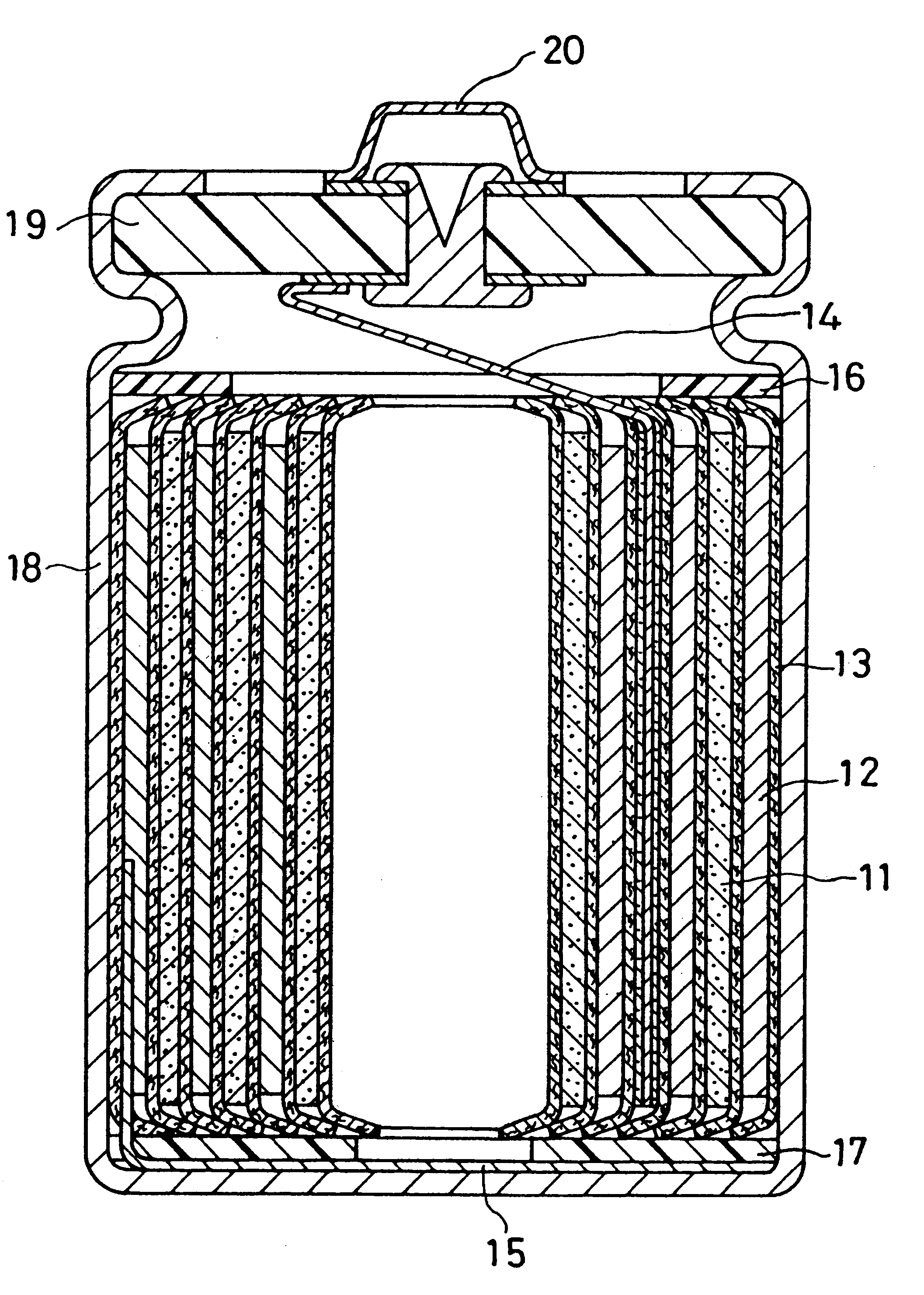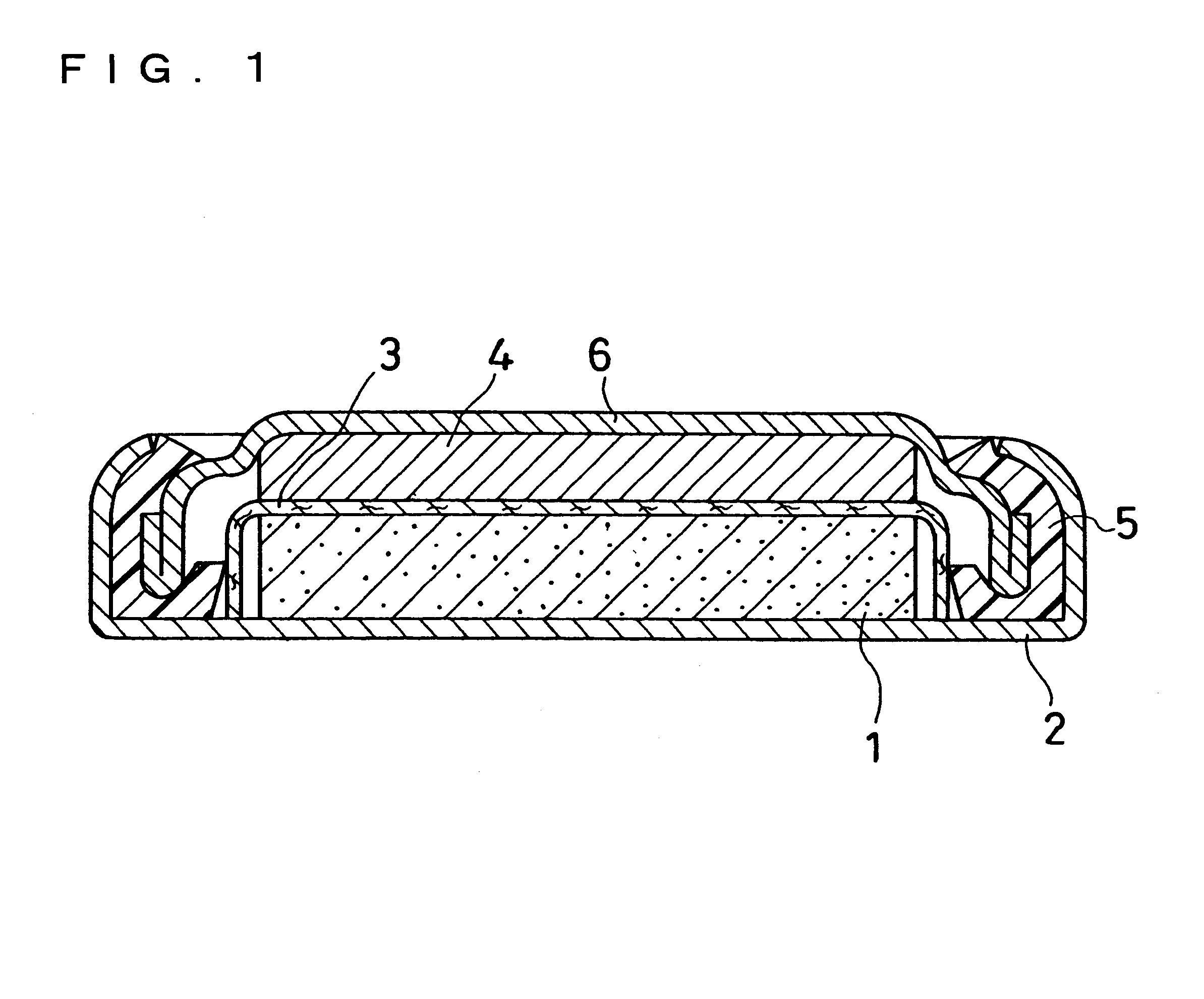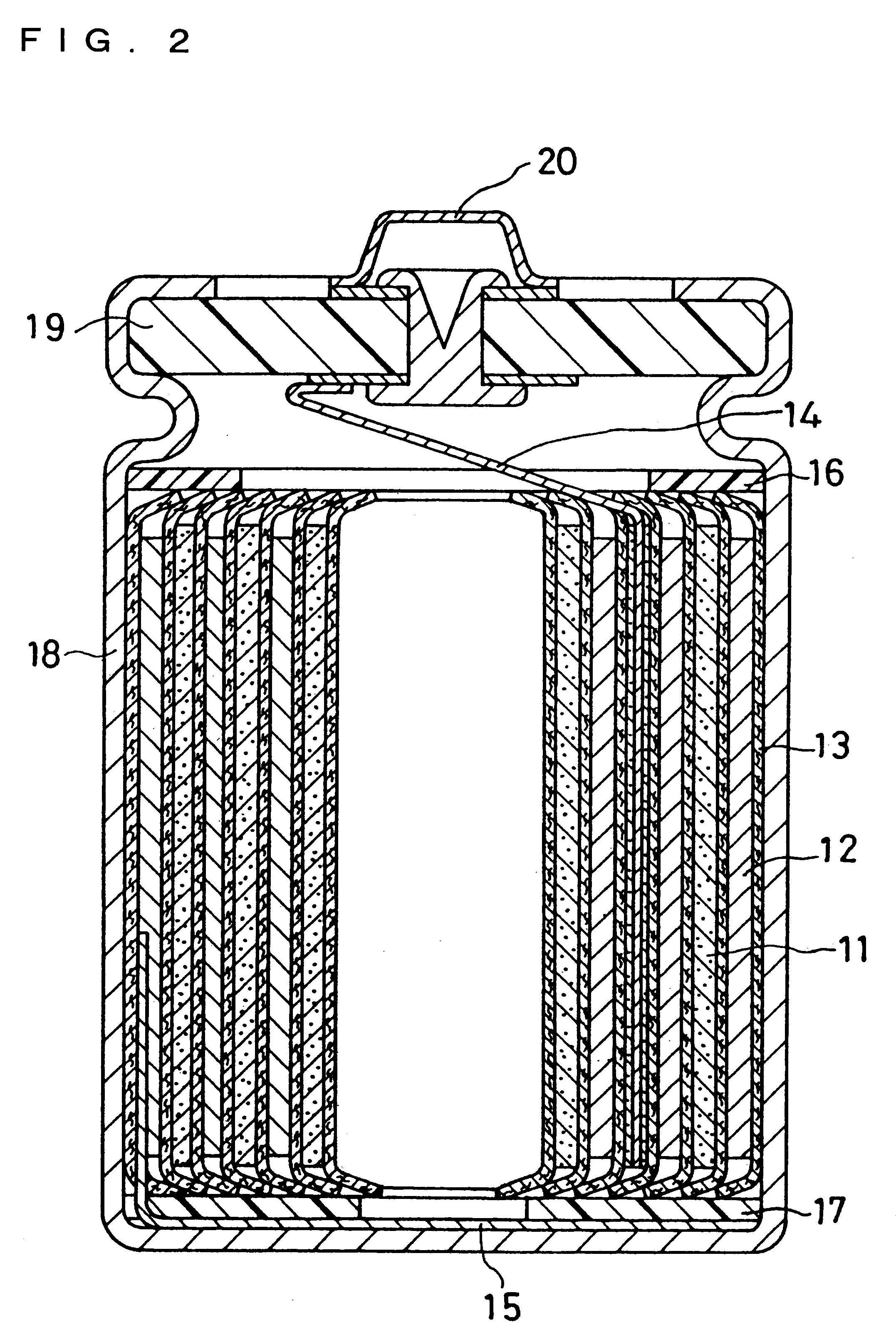Non-aqueous electrolyte secondary battery
a secondary battery, non-aqueous electrolyte technology, applied in the direction of active material electrodes, non-aqueous electrolyte accumulator electrodes, cell components, etc., can solve the problems of internal short circuit, deterioration of cycle life characteristics, and reducing charge/discharge efficiency, so as to reduce the activity, reduce the pulverization of particles, and increase the charge and discharge efficiency
- Summary
- Abstract
- Description
- Claims
- Application Information
AI Technical Summary
Benefits of technology
Problems solved by technology
Method used
Image
Examples
example 2
Powders or blocks of elements constituting a negative electrode alloy material were placed in a melting bath at given charging ratio, then, melted by heating, the melted substance was quenched by a roll quenching method for solidification. The obtained solidified substance was ground by a ball mill, and classified by a sieve to obtain alloy particles having a particle size of 45 .mu.m or less.
It was confirmed that these alloys are constituted of at least three phases by electron microscope observation, element analysis and X-ray structure analysis. It was also found that phases were present in ratios as shown in Table 3.
The above-mentioned alloys were also subjected to surface analysis in accordance with EPMA analysis, to find that any alloy had a maximum crystallite size of 7 .mu.m and an average crystallite size of 2.0 .mu.m. The phase satisfying the above-mentioned formulae (2), (3) and (4) had a maximum crystallite area of 3.times.10.sup.-8 cm.sup.2. In some alloy particles, a p...
example 3
In this example, electrode characteristics as the negative electrode active material of alloys having a surface coating phase were evaluated.
Alloy active materials selected from Cu (particle), Co (particle), Mn (block), Ni (particle), Ti (block), Sn (particle), Si (particle) and Al (powder) were mixed at given combination and molar ratio, and the mixture was cast in an arc melting furnace. The resultant cast article was processed by a gas atomizing method to obtain spherical particles. These alloy particles were passed through a 45 .mu.m sieve to obtain particles having an average particle size of 28 .mu.m.
The above-mentioned particles were subjected to X-ray diffraction analysis, to find that any of the particle had a plurality of alloy phases or single phase, and a phase having a composition satisfying the above-mentioned formula (8) was present without fail. Further, the above-mentioned particles were subjected to EPMA analysis, to find that in any particle, the crystal grain siz...
PUM
| Property | Measurement | Unit |
|---|---|---|
| size | aaaaa | aaaaa |
| density | aaaaa | aaaaa |
| crystal grain size | aaaaa | aaaaa |
Abstract
Description
Claims
Application Information
 Login to View More
Login to View More - R&D
- Intellectual Property
- Life Sciences
- Materials
- Tech Scout
- Unparalleled Data Quality
- Higher Quality Content
- 60% Fewer Hallucinations
Browse by: Latest US Patents, China's latest patents, Technical Efficacy Thesaurus, Application Domain, Technology Topic, Popular Technical Reports.
© 2025 PatSnap. All rights reserved.Legal|Privacy policy|Modern Slavery Act Transparency Statement|Sitemap|About US| Contact US: help@patsnap.com



